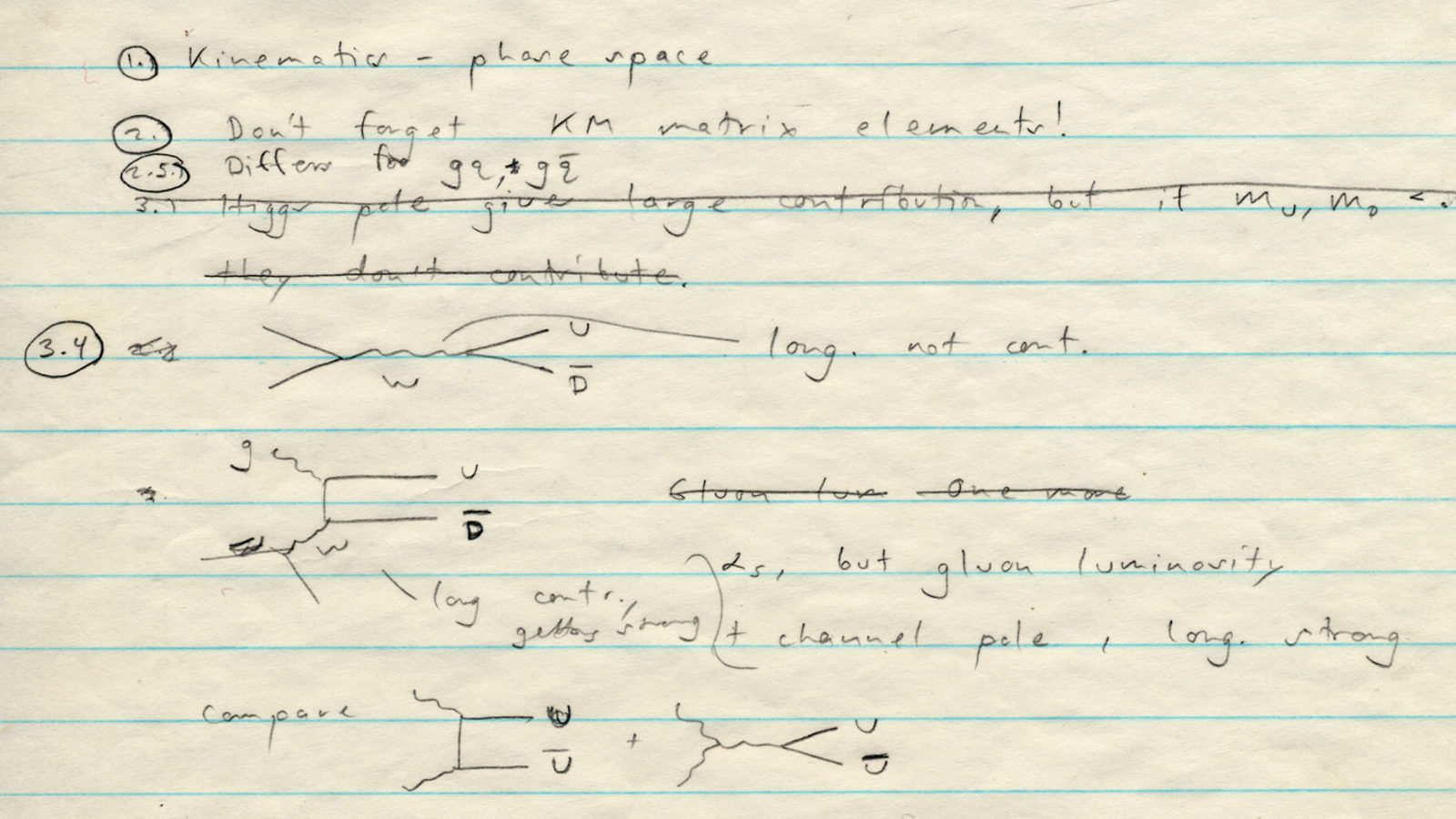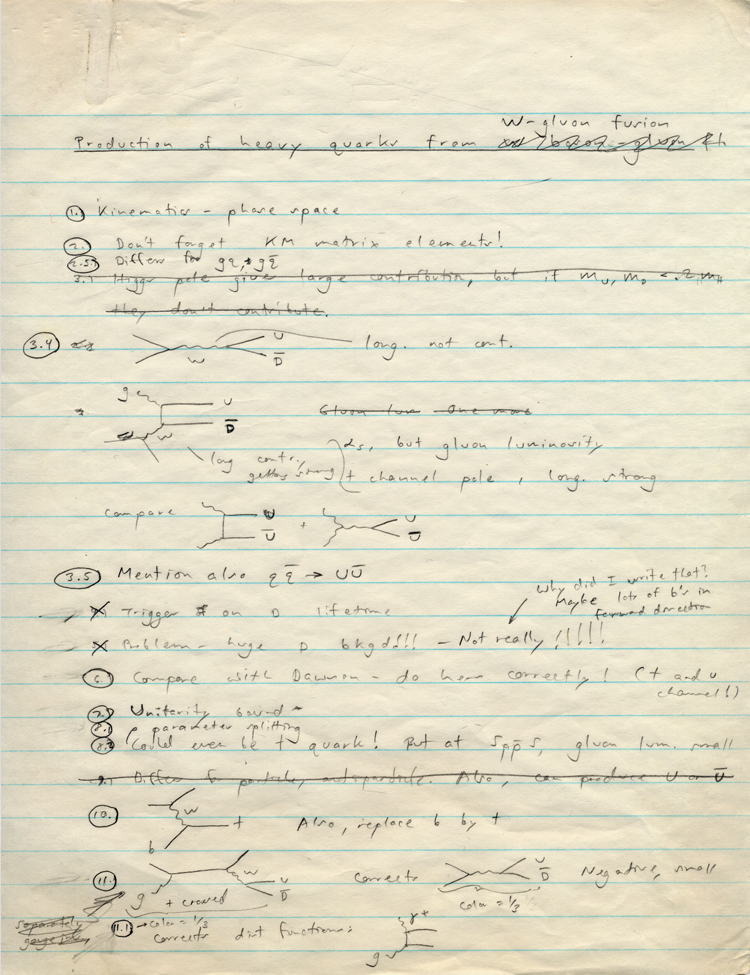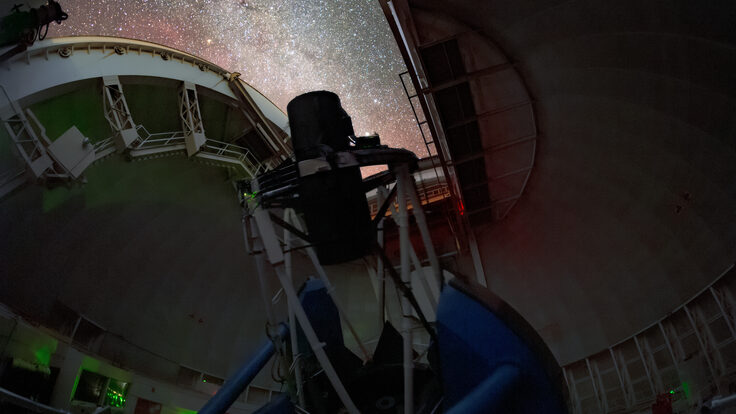Willenbrock remembers that the eureka moment came when he was sitting in a UTexas shuttle bus on his way home. There he realized that a subatomic process called “W-gluon fusion” could lead to a single heavy quark. To outline the calculation, Willenbrock made this to-do list and included the remark, “Could even be t quark!”
“Back then we were thinking about a hypothetical fourth generation of quarks [labeled U,D in the list],” says Willenbrock, now a professor at the University of Illinois at Urbana-Champaign. “Physicists had no idea how heavy the [third-generation] top was, and we didnt know whether this calculation would be relevant to the top.”
In 1995, the CDF and DZero experiments at Fermilab observed top quarks for the first time, produced in pairs via the strong nuclear force. The particle was so heavy that scientists began to search for single top quark production as well. In December 2006, about twenty-one years after Dicus and Willenbrock published their predictions, the DZero collaboration reported the first evidence for single top production at the Tevatron.








